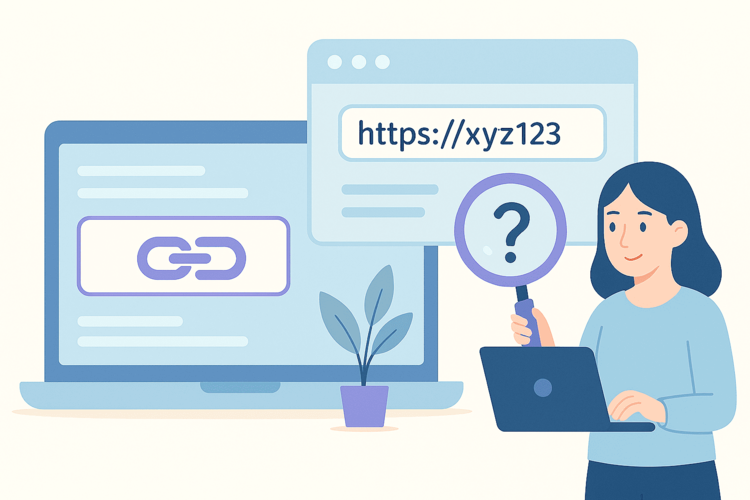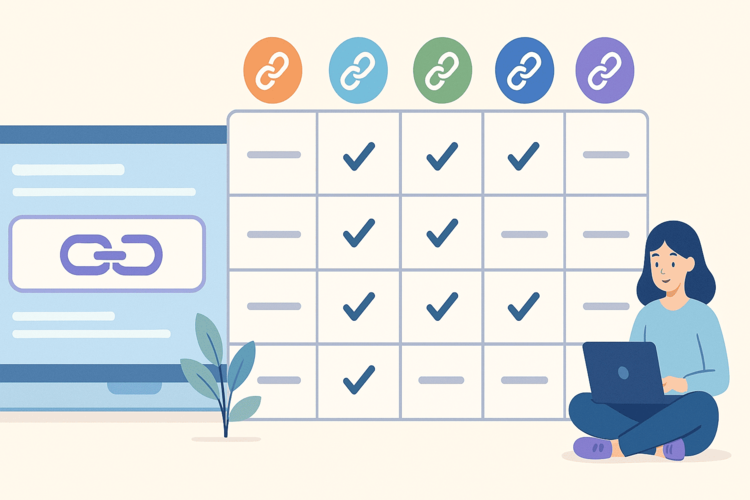What is Google URL shortener (goo.gl)?
The goo.gl service is the official link shortener from Google, launched in 2009. Its main function is to convert long web addresses into short and shareable links (short links google) that are easy to insert into tweets, emails, SMS, or QR codes. goo.gl was a simple and reliable tool for shortening links from Google, but over time, it gave way to more modern solutions for analytics and mobile traffic. Today, there are many modern alternatives for shortening links.
The Google shortener, during its operation, had the following functionality:
- Shortening links - creating a short URL that leads to the same page.
- Statistics - viewing the number of clicks, user geography, browsers, and devices of users.
- Easy integration with Google account - history of Google short links from one account.
- QR code generation - automatic creation of a QR code for each link.
The history of the goo.gl service can be divided by years: 2009 - launch as part of the Google Toolbar; 2010 - the service became open to the public; 2018 - Google officially stopped supporting goo.gl for new users; 2019 - the service was finally closed, and existing links remained active.
goo.gl is part of the history of the Internet and the first popular link shortener, trusted by millions. Its closure resulted from Google's transition to modern, mobile-oriented solutions, but the principle of short links lives on - already in new tools that, in addition to Google, were also opened by other companies.
Why was the Google link shortening tool so popular? Firstly, it was reliable and fast to operate. Google provided a stable infrastructure, thanks to which shortened links worked almost instantly.
The long link shortening service was without advertising. Unlike some services (for example, adf.ly), goo.gl did not show intermediate pages or banners - just redirects.
Google link shortener - it was easy to use for an ordinary Internet user. goo.gl was minimalistic, without unnecessary features - just a short link and statistics.
The goo gl link shortener provided automatic creation of a QR code: after creating a short link, you could immediately download its QR version, which was extremely convenient for use on printed materials, for example, banners or business cards.
The Rise of Google URL Shortener
The goo.gl service gained popularity almost immediately after its launch in 2009. It was Google's first official URL shortener, offering a simple, fast, and secure solution for shortening long, difficult-to-perceive web addresses.
There were many reasons for the growth of the popularity of the Google link shortener. Firstly, this is support for the authority of Google. Users trusted the service because it was part of the Google ecosystem, which is known all over the world. The shortened link goo.gl/... caused more trust than the unknown bit.ly or adf.ly at that time.
The service was fast enough and reliable. Thanks to Google's infrastructure, redirection worked without delays. In times when mobile Internet was slower, loading speed played a key role in choosing the right service. And Google, in turn, solved this problem and gave users exactly what they needed.
The service's ease of use also played a significant role in the growth of popularity. The Google shortener did not require registration to create a link
Minimalist interface: insert → short → get the result.
Each user could view the statistics necessary for work: the number of clicks, the user's geography, their device, and web browser. And this greatly simplified the work of marketers. After creating a short link, you could immediately generate a QR code.
Such accessible and simple functionality significantly increased the popularity of the service compared to competitors, which is why Google short links were so popular in various niches.
In 2010–2014, popular social networks (Twitter, Facebook, YouTube) were actively developing, and shortening links became a necessity due to the limitation of the number of characters (for example, 140 on Twitter). goo.gl quickly became the standard for distributing links in tweets, presentations, and emails.
Why Google URL Shortener Was Shut Down
Google officially stopped supporting goo.gl in 2018 and completely closed the service in March 2019. The reasons for the closure were strategic and technological, as Google made a choice in favor of a more modern tool.
The main reasons for the closure of the popular link shortening tool, goo gl link shortener:
Move to mobile-first approach: over time, the need for deep links that take the user not just to the site, but directly to the mobile application section has increased. Google promoted its own alternative - Firebase Dynamic Links (FDL), which works with Android and iOS. The goo.gl shortener did not support such features, so it was outdated for new tasks.
Limited functionality. goo.gl had very simple functionality, so the company decided not to develop goo.gl further, since it did not match the functions that competitors already provided at that time.
Security of using the service: attackers began to use goo.gl to mask phishing and malicious sites.
Change in Google's strategy: the company's work focused on integrating products into Firebase - a platform for developers of mobile and web applications, so it was decided to close the outdated tool.
Surl.li - modern alternative to Google's URL shortener
After the closure of the goo.gl link shortening service in 2019, many users switched to other alternatives. Google's short links were replaced with new links using alternative link shortening services. This led to the emergence of many new companies that provide convenient and simple functionality for shortening long URLs. Among them is the Surl.li tool.
Advantages of the Surl.li shortener:
✅Minimalist interface and ease of use.
✅You can generate links quickly, in a few clicks.
✅Available statistics on the shortened link, including the user's geography, web browser, and device.
✅Free online support via convenient communication channels.
✅UTM generator.
✅Saving statistics for a certain time and the ability to edit the link (the amount depends on the selected tariff).
✅Bulk URL shortening.
✅Suitable for general use.
✅API integration.
✅A free tariff and paid tariffs with wide functionality, low cost.

The link shortener quickly generates the desired short link, which can even be remembered. You can also choose a domain in which you prefer to shorten a long link. Surl.li is a more convenient and modern alternative to the Google link shortener, which was popular in the past. Today, when choosing a link shortening service, users are looking for a more convenient and full-featured tool for working with short links, so Surl.li is a good choice.
If none of the tariffs are suitable, you can order a personal tariff for the shortening service user. It will include a personal number of links per month, the number of shortenings, the number of redirects, the number of statistics, and personal branded links. To order such a tariff, you need to contact the technical support of the Surl.li user.
Google link shortener is a thing of the past. It has been replaced by a whole range of modern link shorteners that not only replace the functionality of goo.gl, but also offer much wider possibilities. Today, link shortening is not only about reducing the length of URLs, but also about traffic management, audience analysis, and brand marketing. Goo.gl was a good start, but modern services offer much more. Choose a service based on your needs - from simplicity to a full-fledged marketing tool. The link shortening service Surl.li is great for both the first and second cases.




